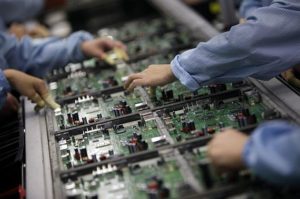In this article we will introduce the Reverse Engineering PCB Board Background from defence industry:
Defense contractors who supply systems, equipment and spare parts during the initial production phase of a weapon system acquisition in which they have performed in the development, frequently become the “sole-source” for follow-on procurement. The cost of items procured under these sole source conditions are sometimes inflated beyond their true value.

Reverse Engineering PCB Board Background
Consequently, procurement costs for spare parts consume an increasingly larger share of the defense dollar. Recent emphasis on the prices paid for spare parts dictates the need for competition. Congress and the Department of Defense (DOD) directed the military services to increase competition in an effort to reduce the cost of spare parts such as PCB Board which is a strong request for PCB cloning.
The Defense Acquisition Regulation Supplement No. 6 (DAR-S6), dated 1 June 1983, titled: DOD Replenishment Parts Breakout Program (see 4.3), was promulgated to encourage competition and reduce restrictive features which limit competitive procurement.
Reverse engineering is a process that examines an existing product to determine detailed information and specifications in order to learn how it was made and how it works. For mechanical assemblies, this typically involves disassembly and then analyzing, measuring and documenting the parts. Reverse engineering is not limited to mechanical components or assemblies. Electronic components and computer programs (software), as well as biological, chemical and organic matter can be reverse engineered as well.
Another reason to reverse engineer a product is to create interoperable products. While some uses for reverse engineering can be illegal, courts have ruled that reverse engineering for interoperability can be considered fair use. For example, a software company may use reverse engineering to make its software run on a different operating system.






